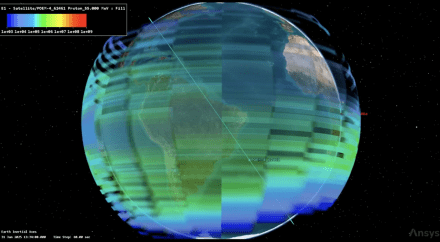GalaxEye, a SpaceTech startup, has successfully tested its revolutionary SyncFusion Imaging System, achieving a major milestone in space technology. The company’s GLX-SQ payload, part of Indian Space Research Organisation’s (ISRO) POEM-4 mission, delivered flawless results even in the extreme conditions of the South Atlantic Anomaly (SAA). This area of space is known for its elevated radiation levels.
This successful test highlights the resilience of GalaxEye’s technology in some of the harshest conditions present in space.
The GLX-SQ payload was tested aboard ISRO’s POEM-4 platform, an experimental space lab that repurposes the fourth stage of the PSLV rocket for real-time testing of cutting-edge payloads. Operating in the SAA, where radiation exposure is higher than in other regions of space, and during an eclipse where temperatures can drop below -10°C, the GLX-SQ system maintained full functionality.
“We wanted to push the limits of our technology to prove its robustness,” said Suyash Singh, CEO & Co-founder of GalaxEye. Adding, “By operating in the SAA during an eclipse, we have not only demonstrated the performance of our technology but also its ability to withstand the most challenging conditions that space presents. This achievement reflects our engineering excellence and India’s growing leadership in space innovation.”
The South Atlantic Anomaly is an area where Earth’s magnetic field is weaker, resulting in increased radiation exposure. This makes satellite operations in the region more complex and can often lead to malfunctions. However, the GLX-SQ payload demonstrated exceptional performance in this environment, including:
Impeccable SAR image capture and processing despite radiation exposure; Continuous operation in sub-zero temperatures during the eclipse; and Effective performance of thermal insulation systems under extreme conditions.
This success builds on GalaxEye’s earlier breakthrough in combining Synthetic Aperture Radar (SAR) and optical imagery, further solidifying the company’s position at the forefront of Earth observation technology. And this not only validates its technology but also demonstrates India’s capability to handle the most challenging space conditions.
With this feat, GalaxEye is moving forward with its next ambitious initiative, Mission Drishti. The company’s ability to operate effectively in such extreme conditions strengthens its role as a leader in developing innovative space solutions for defense, agriculture, disaster management, and more.
As GalaxEye continues to make significant strides in space technology, it is laying the groundwork for a future where India leads in global space exploration and advancements.
